- Brilliant to drive for an SUV
- Cute and distinctive styling
- Standard massaging front seats!
- Featureless rear seat not huge
- Interior quality could be better
- Optional sunroof limits headroom further
We recently tested the new generation of Ford Escape, which is part of the brand’s plan to increase its global sales. What else is on the menu? The 2021 Ford Puma. The Puma replaces the unloved EcoSport in the Ford lineup as the entry-level SUV, and it’s been on sale in Europe for around a year now. Considering how talented Ford of Europe’s engineers are – especially when it comes to making cars drive well – does the Puma have what it takes to take on the ever-expanding small SUV segment? Let’s find out.
Price & Specs: 7.0/10
For now, the 2021 Ford Puma range is offered in three specs: the entry level Puma, mid-spec ST-Line and top-spec ST-Line V – here we tested the base spec, which is priced from $29,990 plus on-road costs – a bit expensive, if you ask us.
Standard equipment is reasonable, especially for a base model, including 17-inch alloy wheels, auto LED lighting, auto wipers, climate control, an 8.0-inch touchscreen with wired Apple CarPlay and Android Auto, satellite navigation with live traffic reporting, digital radio, wireless phone charging, massaging front seats, heated and auto-folding mirrors, cruise control, a leather-wrapped steering wheel, handbrake and gear knob, an auto-dimming rear view mirror, a reversing camera and rear parking sensors.
Safety kit is reasonable as well with six airbags, auto emergency braking (AEB) with pedestrian detection, lane keep assist with lane departure warning, auto high beam, driver attention monitoring and tyre pressure monitoring.
Above the Puma sits the Puma ST-Line, which adds several sporty details such as a body kit, 17-inch alloy wheels, sports suspension, sports seats, a flat-bottomed steering wheel with paddle shifters, a 12.3-inch digital driver’s display, metal pedals and red stitching.
At the top of the Puma range is the ST-Line V, which adds larger 18-inch wheels, chrome exterior highlights, cornering headlights, a 10-speaker B&O Play sound system, a hands-free electric tailgate, keyless entry, leather upholstery and rear privacy glass.
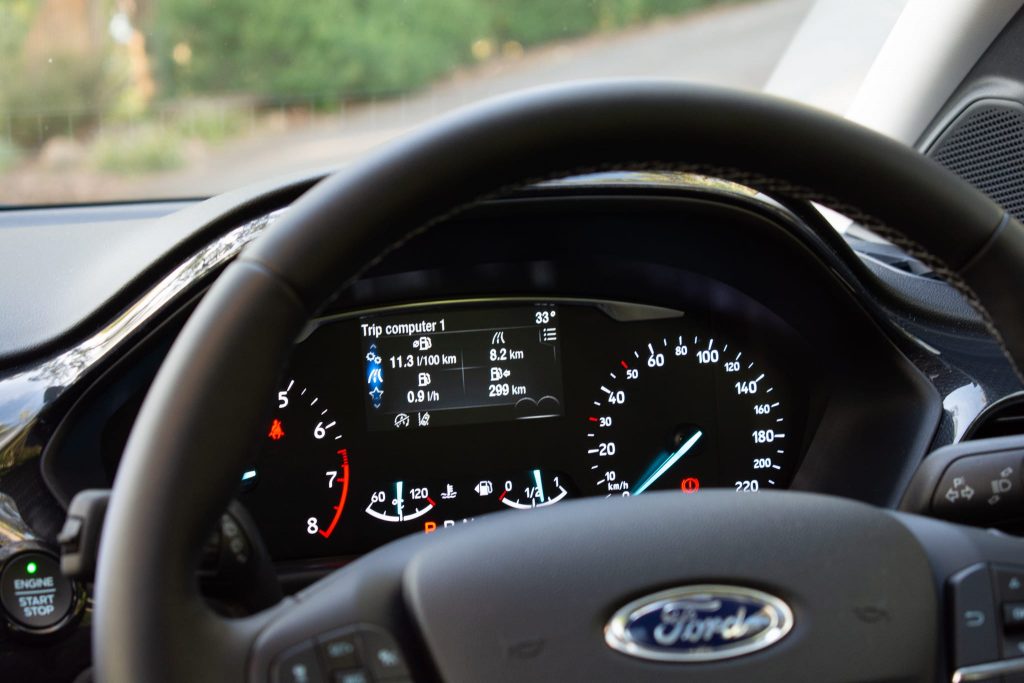
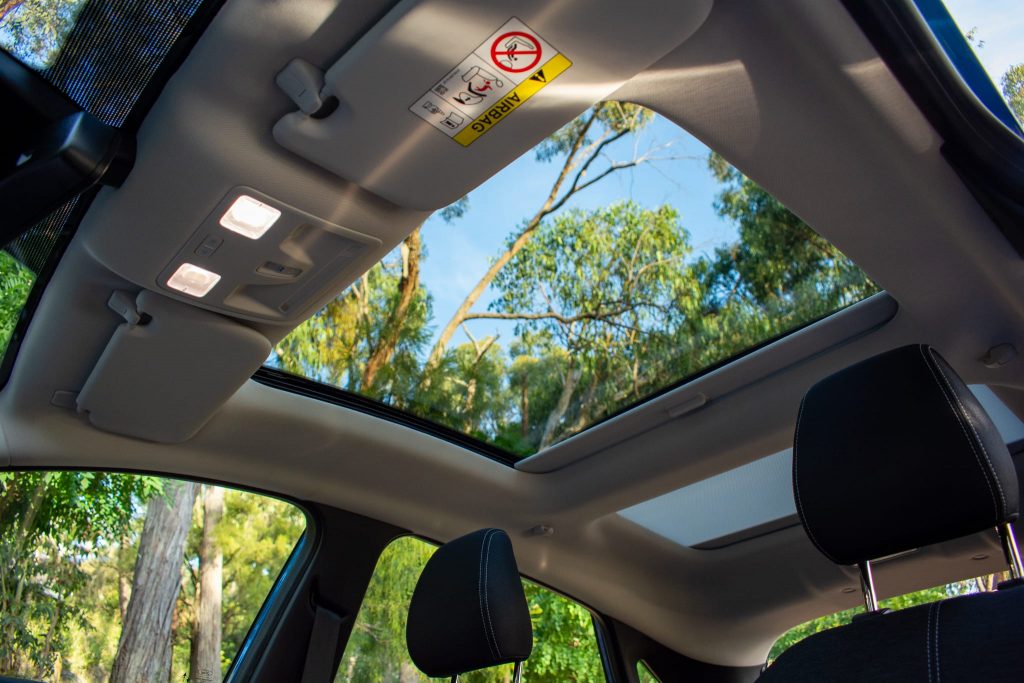
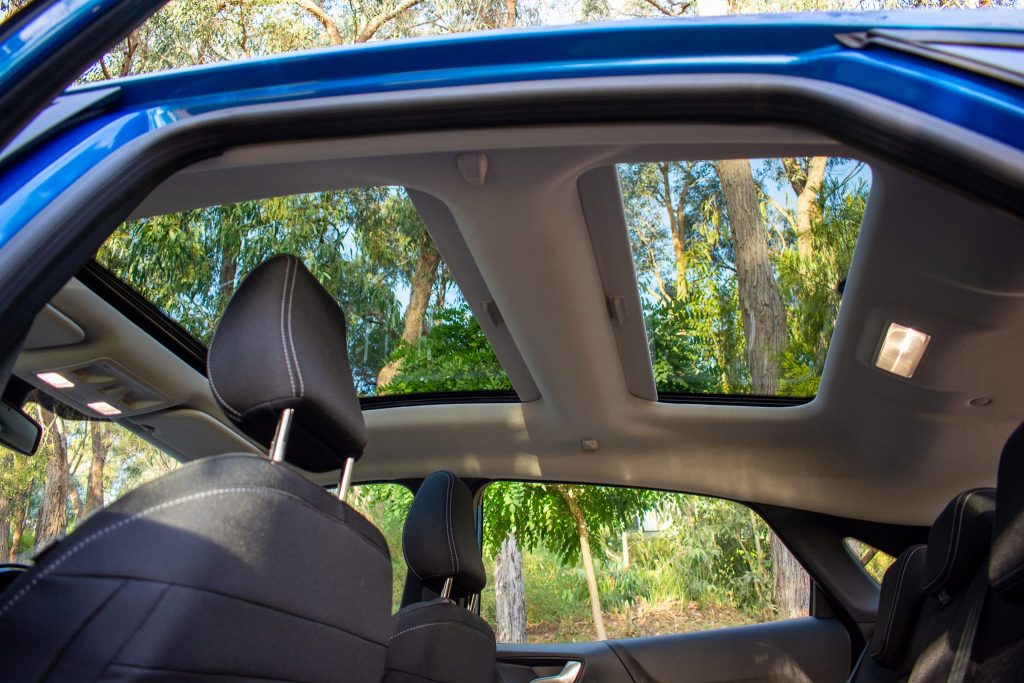
Optional extras are available for the Puma include a $1,500 Park Pack (auto parking with front sensors, adaptive cruise control with stop and go functionality, active lane centring and blind-spot monitoring with rear cross-traffic alert) as well as a $2,000 panoramic opening sunroof, $250 black roof rails, a $500 black roof, a $750 electric tailgate for Puma and ST-Line models (it’s already standard on the ST-Line V) and $650 prestige paint.
Competitors to the 2021 Ford Puma include the Skoda Kamiq, the Toyota Yaris Cross and the Volkswagen T-Cross – the Skoda is undoubtedly the best value for money in this segment as while the Puma offers navigation as standard, the Kamiq includes way more features overall such as 18-inch wheels, a power tailgate, adaptive cruise control and dual-zone climate control on even the entry-level 85TSI that’s priced from $27,990 drive away (the auto is $29,990). Be sure to have a read about how the Ford Puma took on the Skoda Kamiq.
Performance & Economy: 8.0/10
The Puma comes with a dinky little 1.0-litre turbocharged petrol three-cylinder ‘Ecoboost’ engine under its bonnet, which is capable of putting out 92kW at 6000rpm and 170Nm between 1500-4500rpm. Not bad outputs for such a small unit, and on par with larger engines of yesteryear. In Australia, all Ford Pumas are paired exclusively with a seven-speed dual-clutch transmission with power being sent to the front wheels.
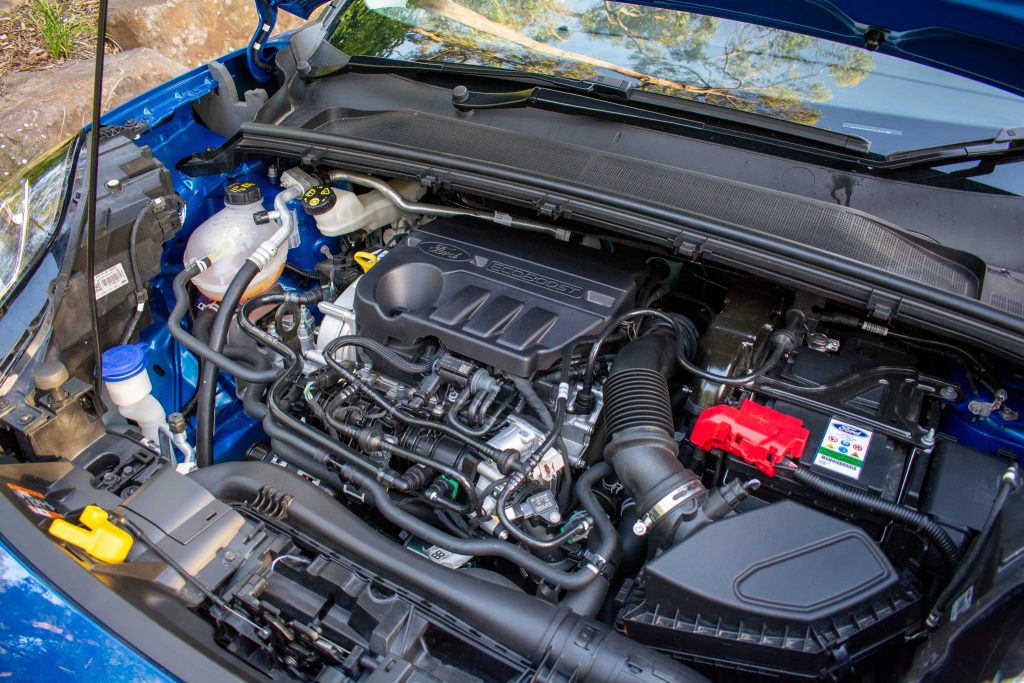
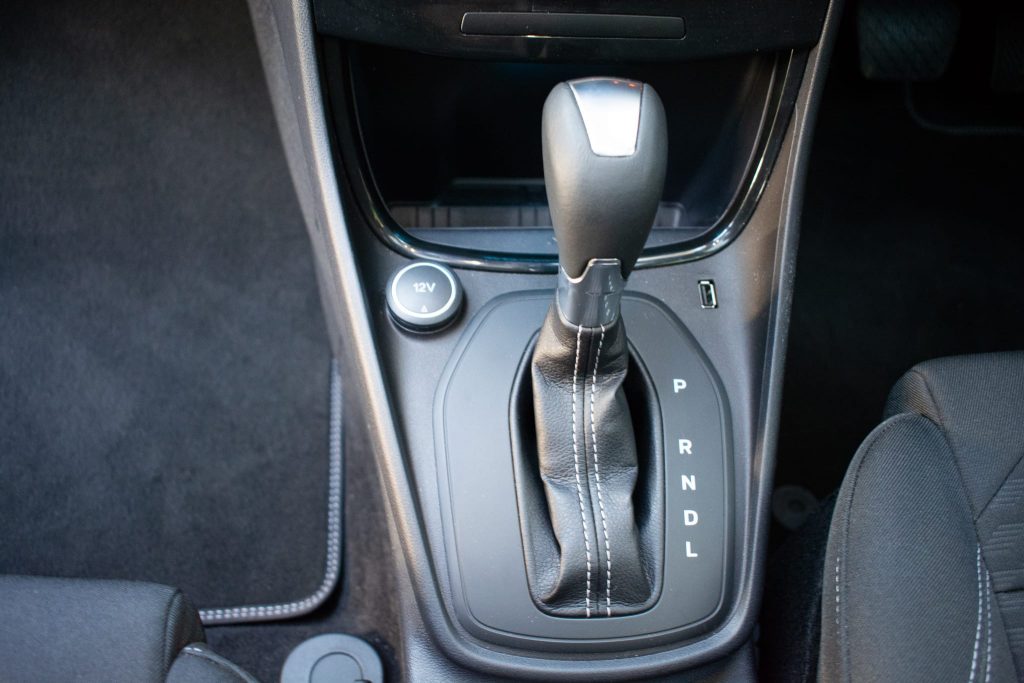
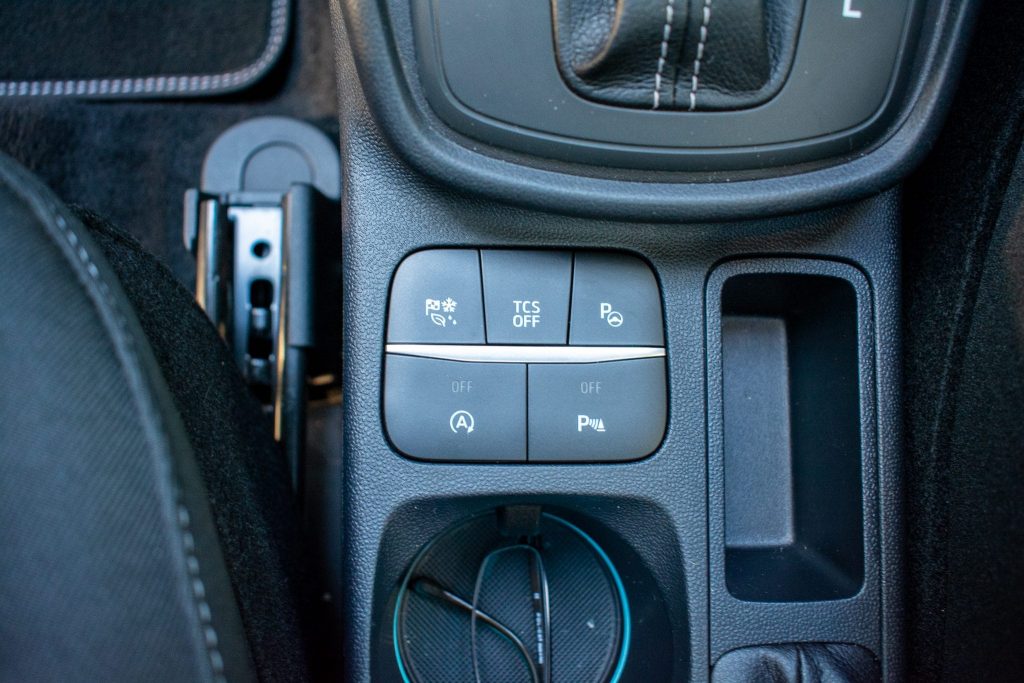
Hearing “Ford” and “dual clutch” might raise alarm bells for those familiar with the Powershift saga which implicated Ford a few years ago, but the company tells us that those days are long gone with the lessons learnt from the Powershift.
From standstill, the transmission is super sophisticated in the way it creeps forwards and changes gears. Only sometimes does some shudder appear when moving off briskly from a set of lights, or up a very steep hill. On the move, the dual-clutch transmission slips into gears quickly, targeting the 1.0-litre engine’s effortless pulling power from 2000rpm to 4000rpm.
The engine itself is a feat of engineering. It feels super punchy from low revs, yet will happily chase the redline when a quick burst of acceleration not he freeway is required. Ford says that the engine gets the Puma to 100km/h from rest in 10.2 seconds, which might not be the last word in speed, but it shows that the Puma will never feel sluggish. Even with five (yes five!) occupants onboard, the A/C set to max and a 40-degree day near Lake Eildon in country Victoria, the Puma accelerated up to freeway speeds smoothly and swiftly. Impressive.
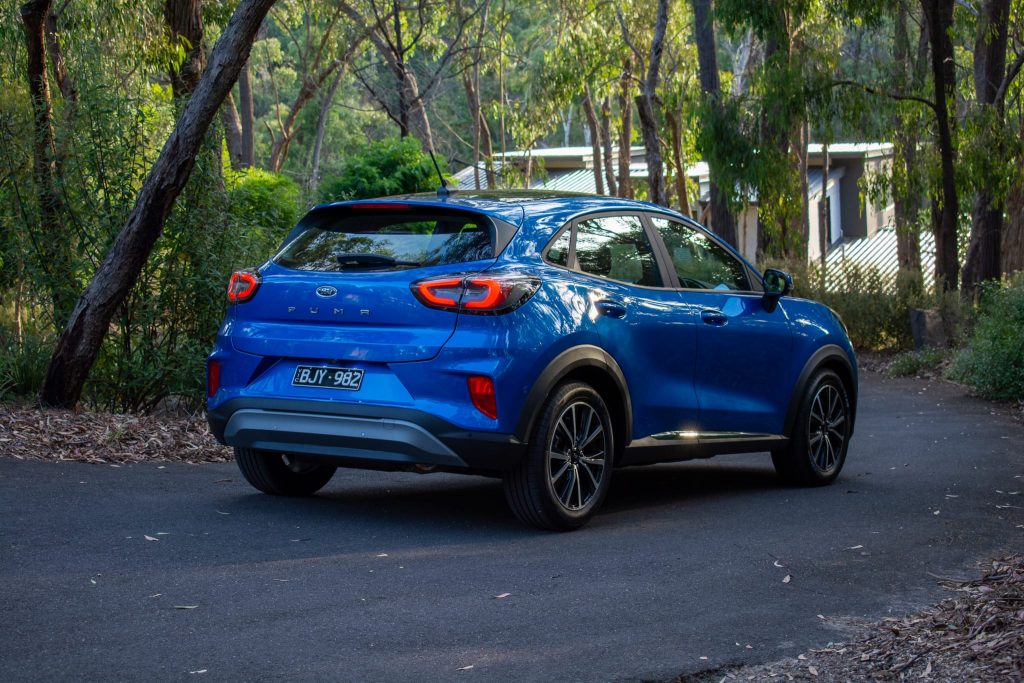
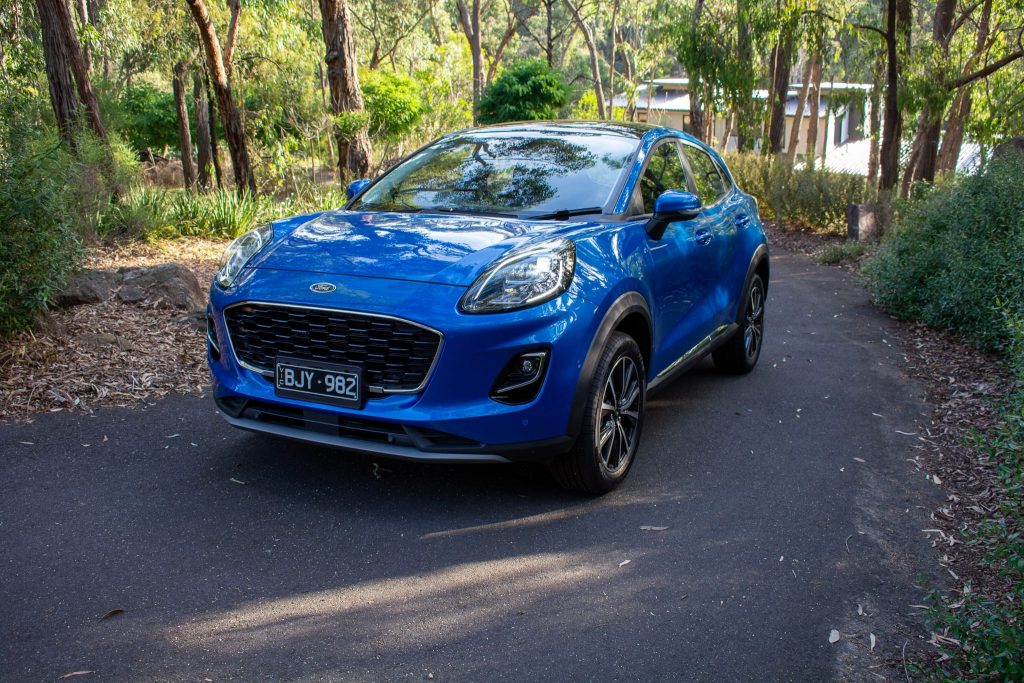
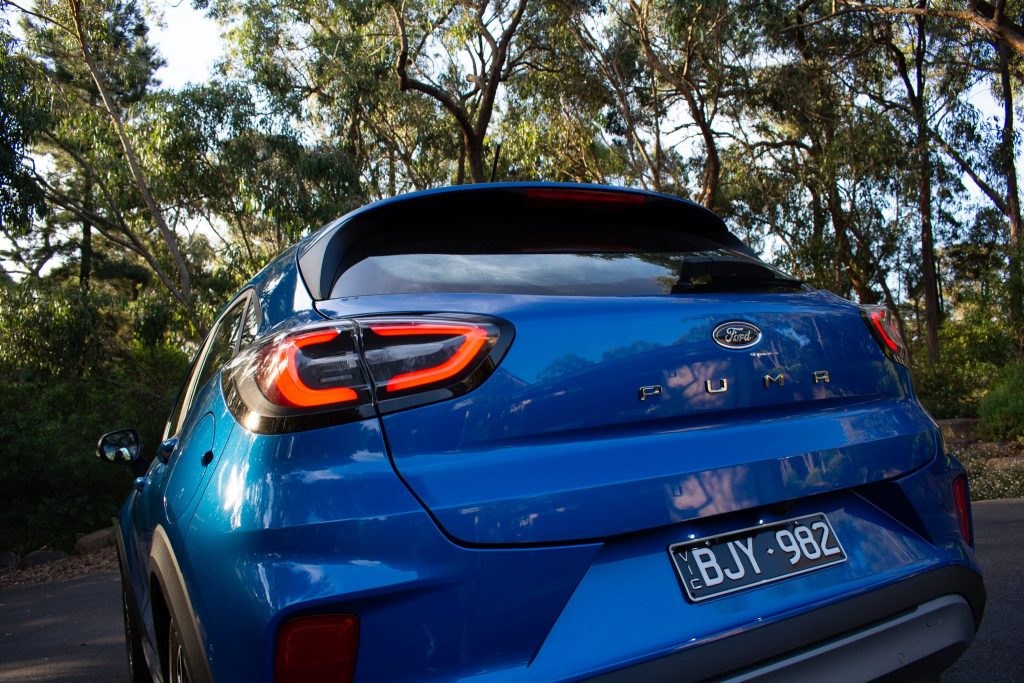
Tipping the scales at 1,287kg, the Puma is relatively light which allows it to be rather economical on the road, with Ford claiming a very frugal 5.3L/100km on the combined cycle. Around town, we averaged around 6.2L/100km, with that figure falling into the mid 5L/100km on our road trip.
The Puma is able to achieve these decent fuel consumption result thanks to clever aerodynamic features, such as active grille shutters which shut off air flow to the engine reducing drag when cooling is not needed, as well as a cylinder deactivation system which lets the engine run on just two cylinders to further reduce fuel consumption.
The only thing that would improve the Puma’s drivetrain would be a more powerful engine – in Europe, Pumas can be had with a 114kW/240-290Nm mild-hybrid version of the 1.0-litre turbo unit tested here, and even a 147kW Puma ST with the Fiesta ST’s drivetrain. We think these engines – plus a manual gearbox – would suit the Puma’s excellent chassis even more, but alas, they’re only offered with manual transmissions for now and thus ruling them out for auto-obsessed Australia.
Ride & Handling: 9.0/10
Developed in Germany and built in Romania, the 2021 Ford Puma is a quintessentially European Ford. Fords hailing from Europe have always had a driving feel so seldom found in their competitors, and this Puma is no exception. Put simply, it is the best mainstream SUV to drive, both in its class and in the classes above. The Puma is just so beautifully engaging to drive and feels much better than the larger Ford Escape we drove recently, which proved to be a tad disappointing behind the wheel.
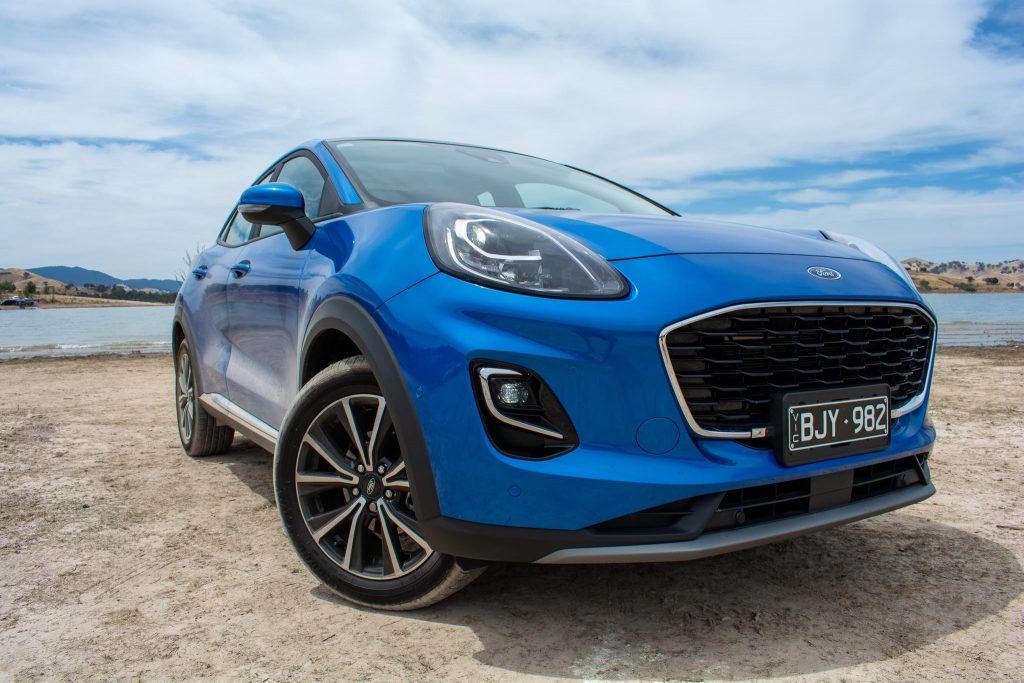
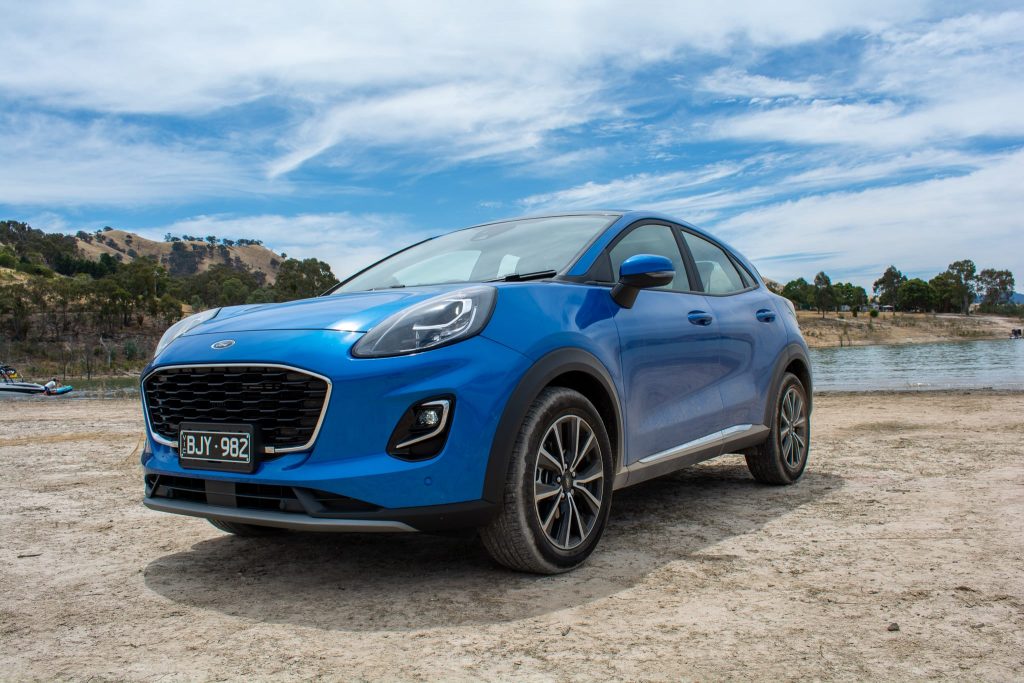
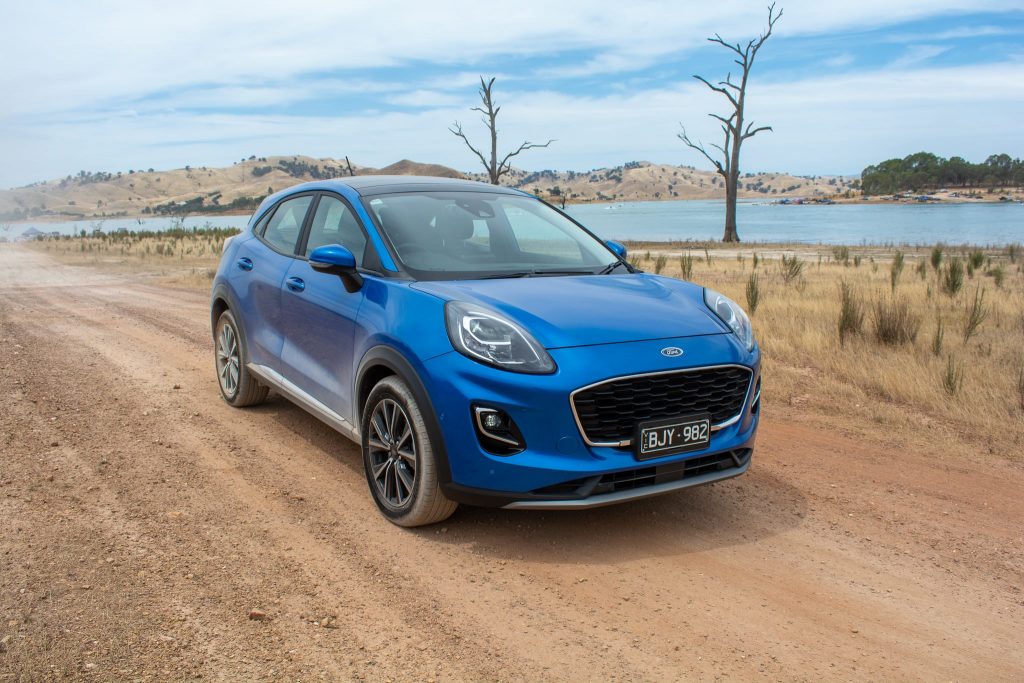
The Puma has been engineered to have razor sharp steering, top-shelf balance, loads of grip and an overall on-road feel which is a cut above other small SUVs. Barrelling in fast into a corner, before lifting off the throttle will reveal that the Puma behaves more like a sports car, rather than a small SUV, as it pivots around the driver to tuck its nose into a corner to reward keener drivers.
The ride is well controlled and damped, even if it is on the firmer side. Around town, the base Puma deals with potholes, speed bumps and railway crossings nicely, with the 17-inch alloys and chubby tyres soaking up most road imperfections. On the open road, the Puma feels rock solid at higher speeds, with wind noise well hushed. The engine ticks over at only 2000rpm at 100km/h in seventh gear. Course bitumen does reveal large amount of tyre roar, meaning that this small European SUV isn’t the most relaxing to drive out of town.
We particularly liked the Puma’s well-calibrated and easy to use safety systems which make long distance cruising much easier. Both the adaptive cruise control and lane centring systems were fitted to our car as part of the Park Pack and proved to work flawlessly, night or day, coming in super handy during our trip into country Victoria.
Interior & Practicality: 8.0/10
Jumping inside the Puma shows that the interior is unmistakably Ford from the moment the door opens. The interior draws heavily on the design cues seen in the Focus, Escape and feels like a slightly more upright Ford Fiesta – which, in reality, is what the Puma is. Overall, the Puma has one of the better interiors when compared to its small SUV rivals such as the Hyundai Kona and Kia Seltos. The plastics feel of good quality without reaching the highs of a Skoda Kamiq – the seat fabric feels expensive, the dash is nicely padded and all of the touch-points are pleasing to the touch.
With Ford aiming for simplicity after creating button heavy interior in the past, the Puma’s entertainment and climate controls are uncluttered and dead easy to use. An 8.0-inch touchscreen featuring Ford’s Sync 3 software sits perched on the upper part of the dash. I personally dislike screens that look stuck on, but in this case the screen’s positioning means that it is within the driver’s line of sight. Sync 3 is super easy to use, responsive and the screen itself is bright and sharp.
The front seats are very roomy and are quite adjustable. The driver’s seat can be set nice and low for sportier drivers, or up higher for a more commanding view of the road. We were very impressed with the Puma’s standard inclusion of front massaging seats which worked a treat with their rolling lumbar massages on longer trips – oddly enough, selecting a more expensive Puma removes this feature.
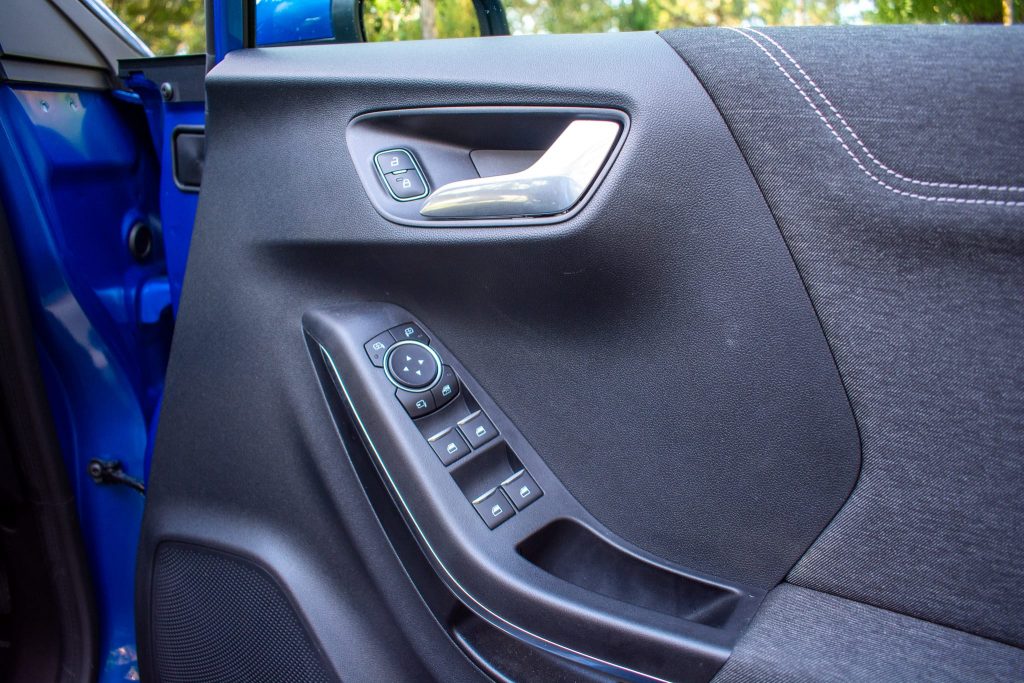
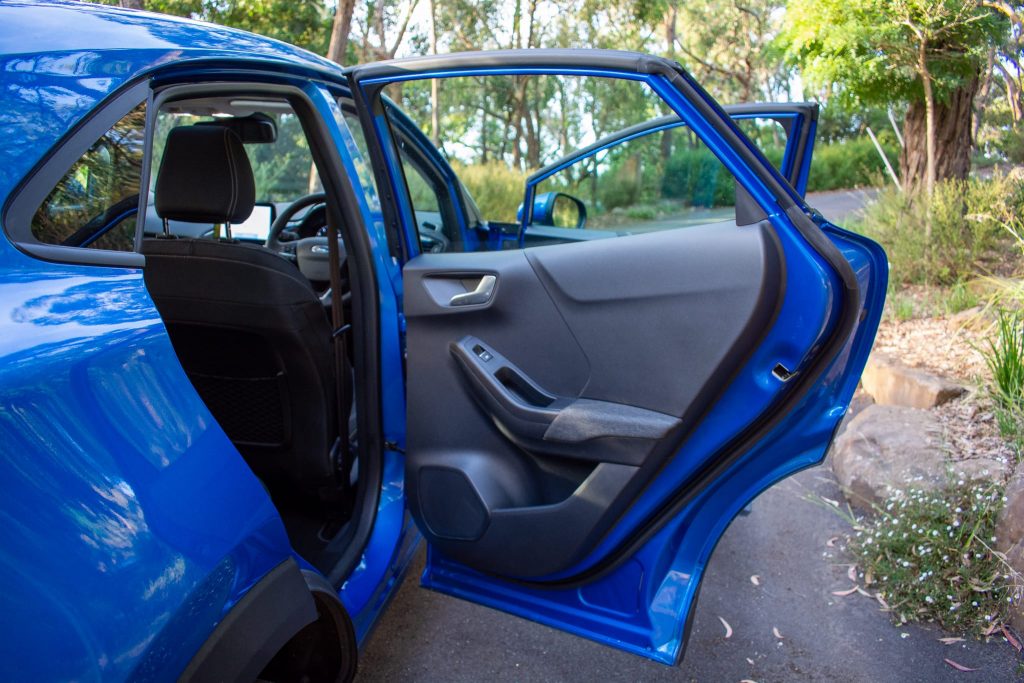
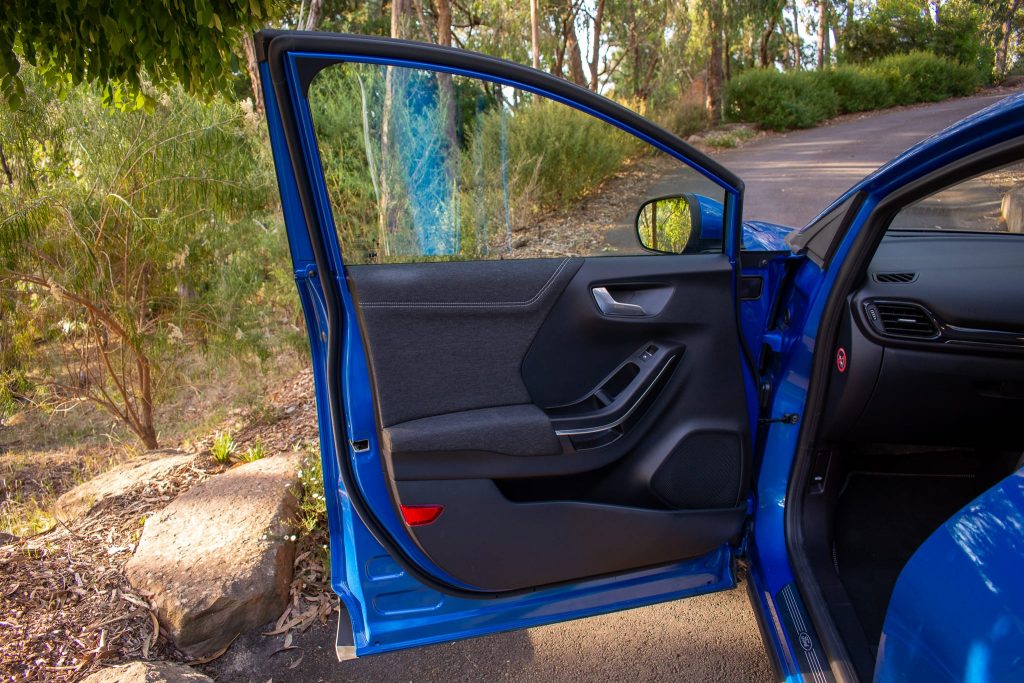
Things take a turn for the worse in the back seat, which isn’t as comfortable as the ones in the front. The seat base is simply too short, the door armrests awkwardly shaped and both legroom and headroom are at a premium, especially with the optional sunroof fitted to our car. There are no rear air vents, no centre armrest and no charging ports up back… Considering that this is meant to be a car for young families, we think Ford can do better.
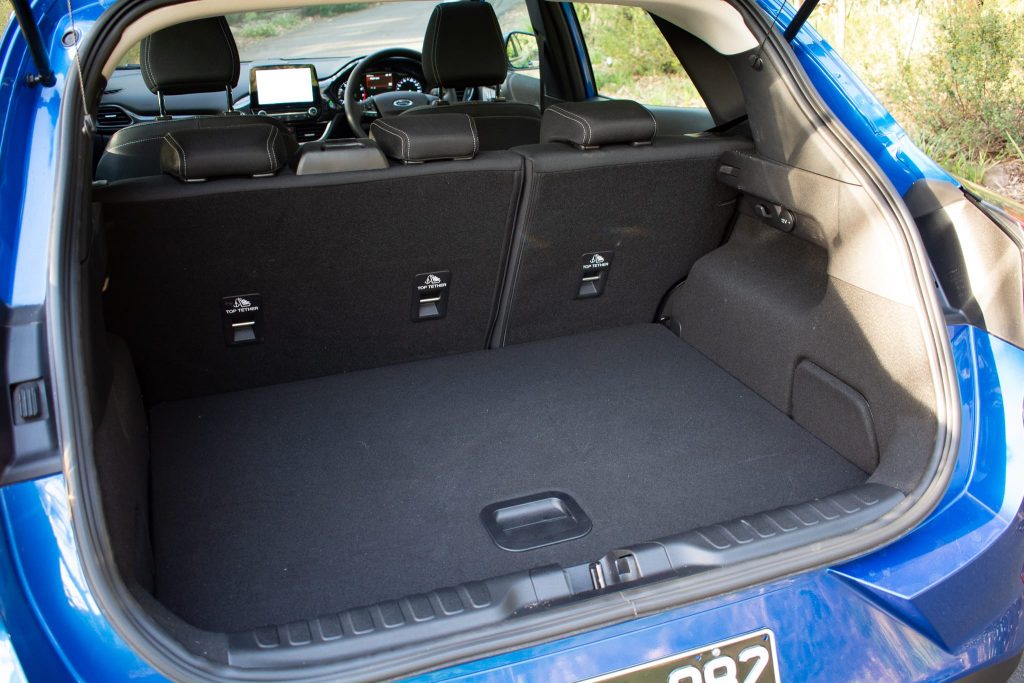
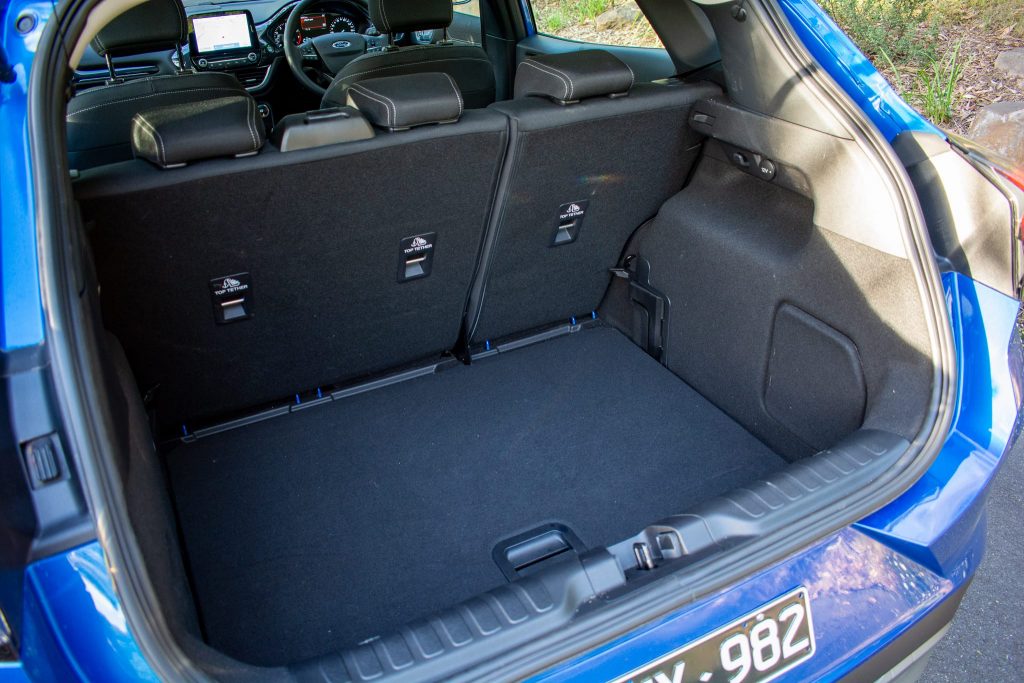
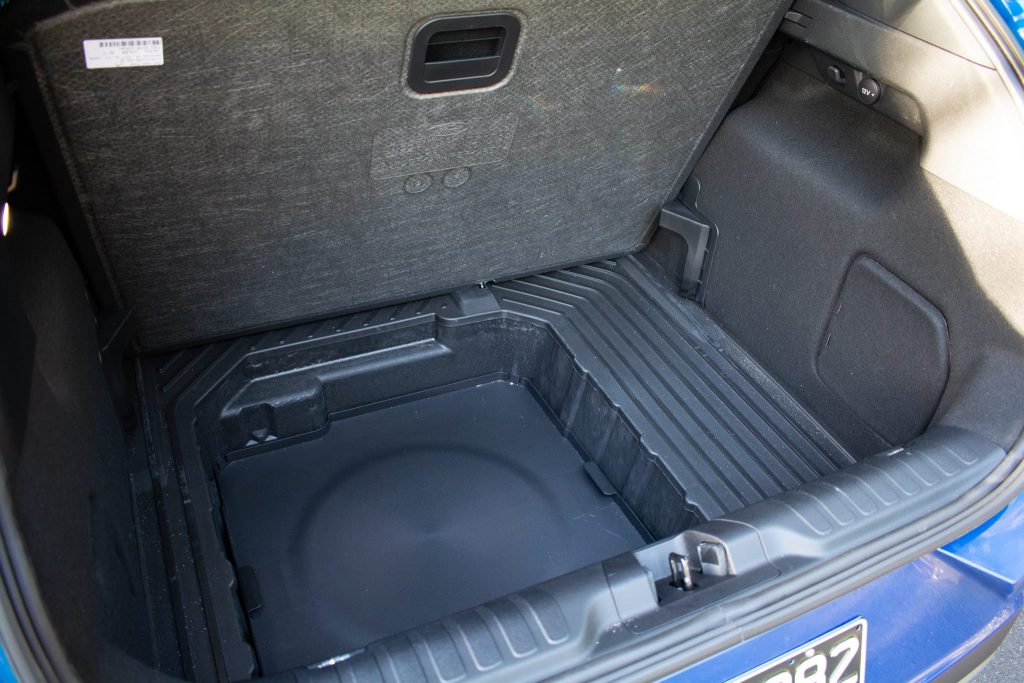
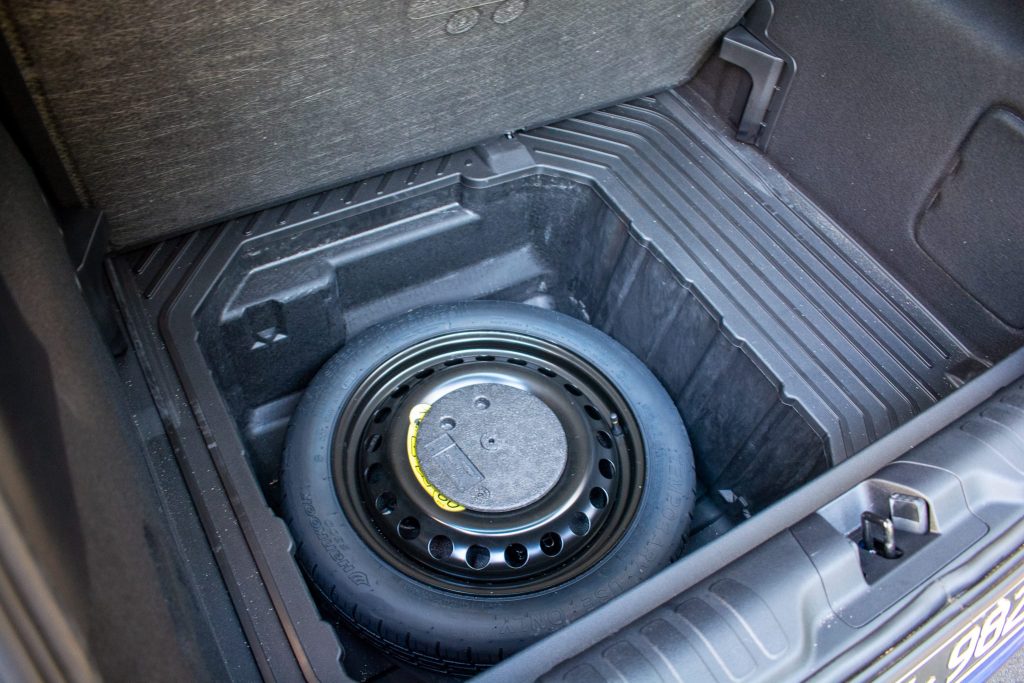
The boot might initially appear tiny with the fully adjustable boot floor at its highest setting. Dropping the floor to its lowest position, Ford claims that the boot has a very decent 376 litres of volume. A further 34 litres of space can be found under the boot floor and above the space saver spare for 410L in total, which is one of the best figures in the segment. The Puma’s rear seats also fold 60:40 giving a decent load capacity of 1170 litres and there are a few hooks and a 12V to further help practicality.
Service & Warranty: 8.0/10
Like with all Ford’s, the Puma comes standard with a five-year, unlimited-kilometre warranty. Ford also pays for roadside assistance and satellite navigation map updates for up to five and seven years respectively when the Puma is serviced through Ford’s dealer network.
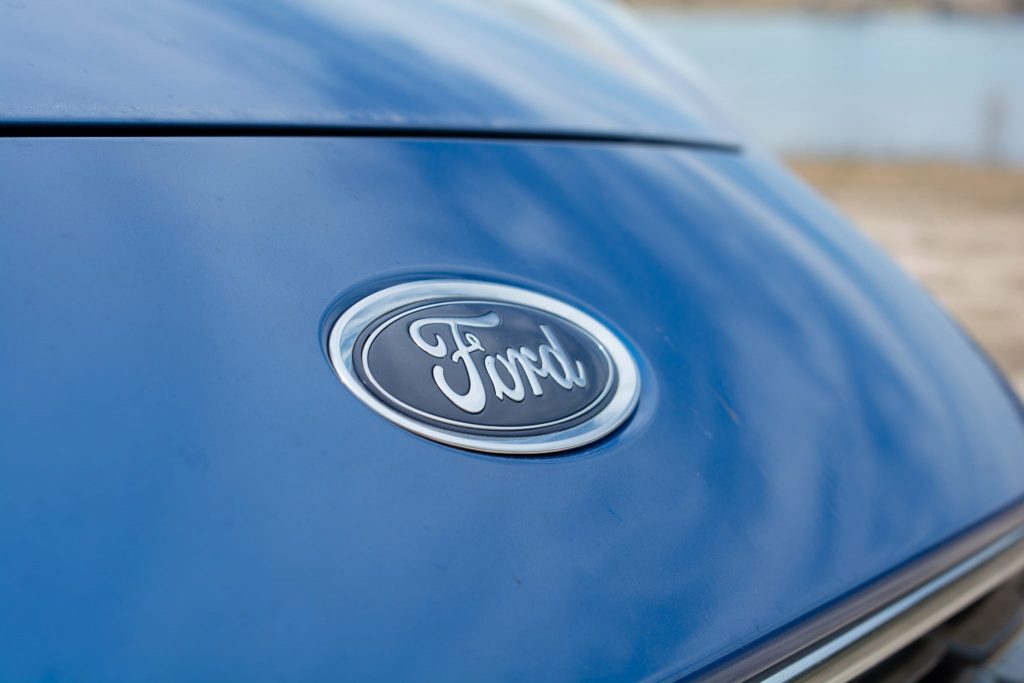
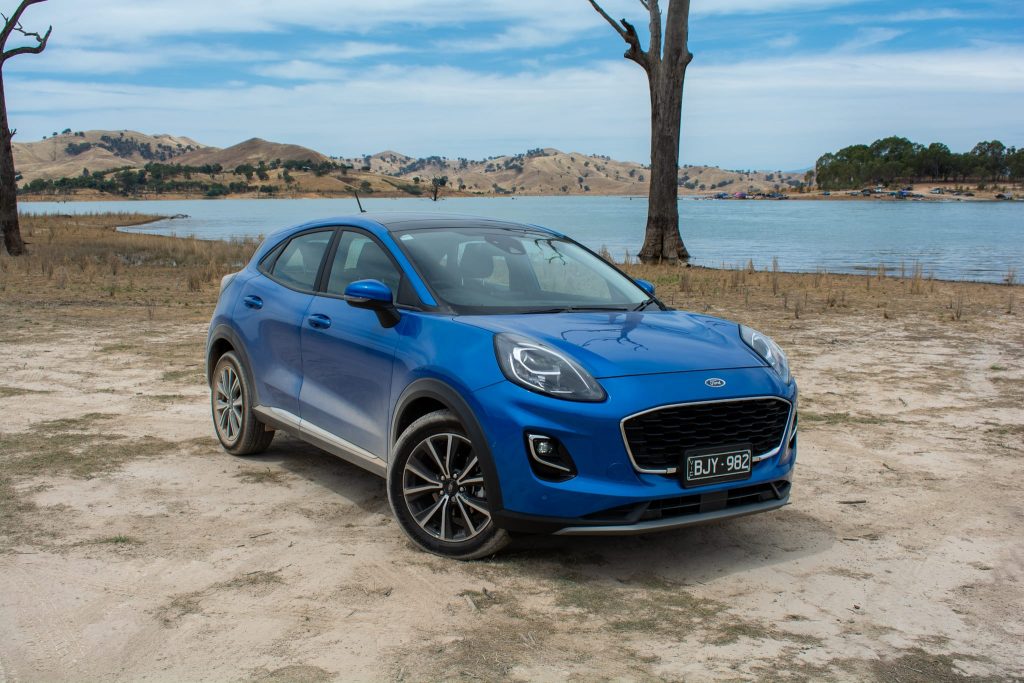
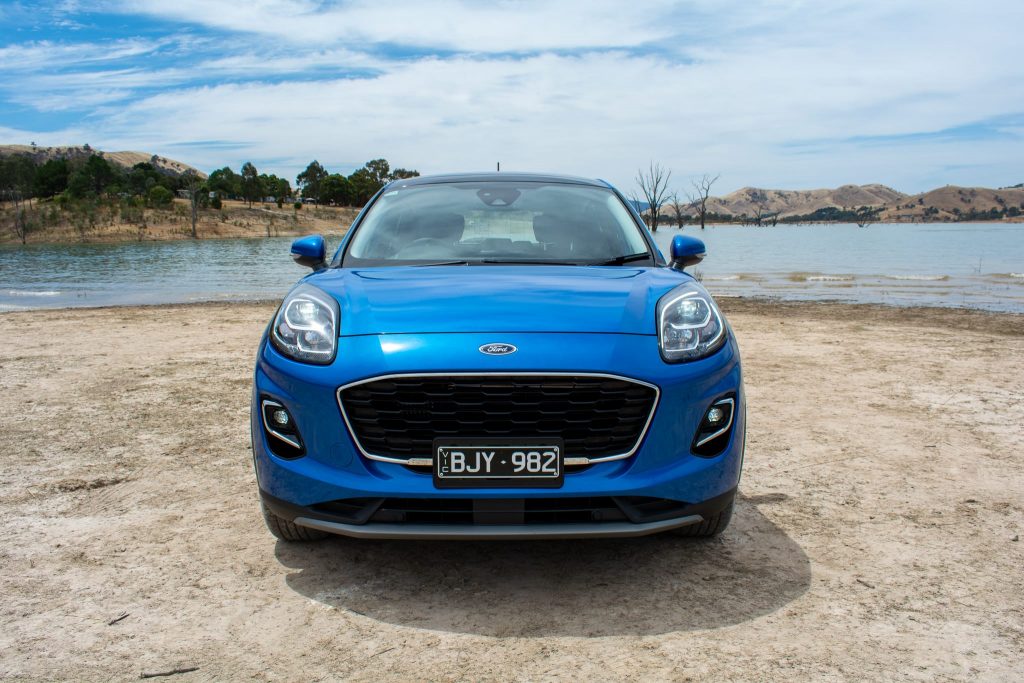
Servicing is scheduled every 12 months or 15,000 kilometres, whichever comes first, with the first four visits to the service department capped at just $299, with the fifth service only coming in at $320. Over 5 years, the 2021 Ford Puma’s servicing will only cost $1516, an excellent result compared to some rivals.
The Puma also requires premium 95-octane unleaded, which is dearer than the standard 91-octane unleaded fuel.
The 2021 Ford Puma DiscoverAuto Rating: 8.0/10
Ford has in many ways nailed the 2021 Ford Puma, and the car is a true testament to their European development team. It truly is a breath of fresh air in Ford’s SUV lineup – much more memorable than the larger Escape and an eternity ahead of the deplorable EcoSport Ford offered in Australia for many years.
The Puma is a brilliant little SUV to drive, distinctive to look at, well equipped and not expensive to own, let down mainly by its slightly cramped rear seats and the occasional quirk. The asking price might be too steep for some, whilst the cost of options definitely reduces the Puma’s appeal, but the Puma shows that Ford has been able to bring a very capable small SUV to market in Australia. We think it deserves to sell very well indeed.
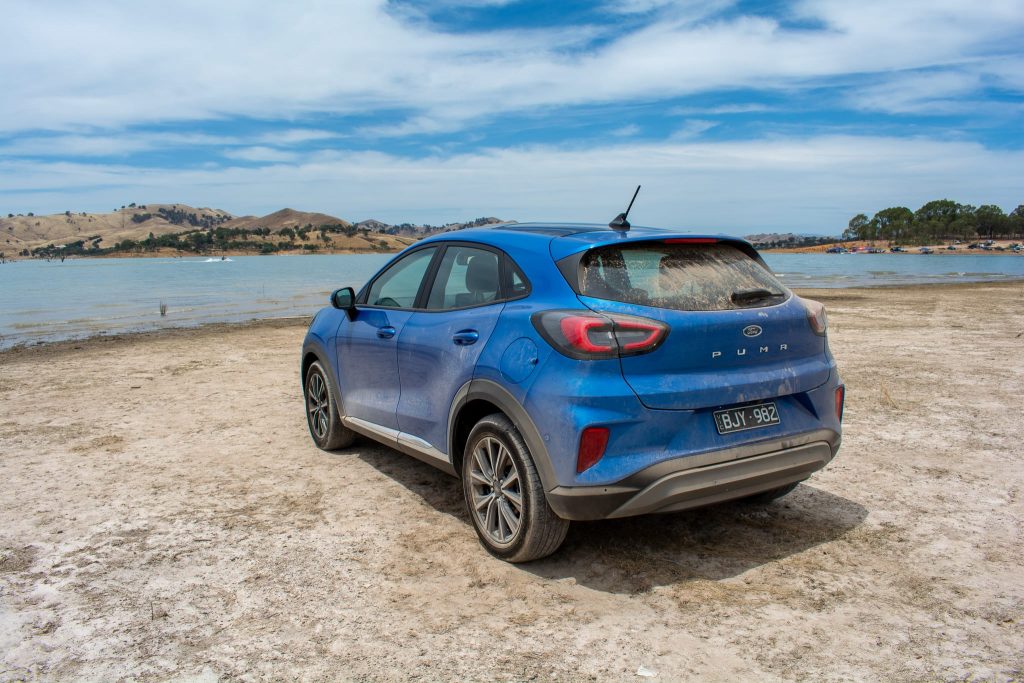
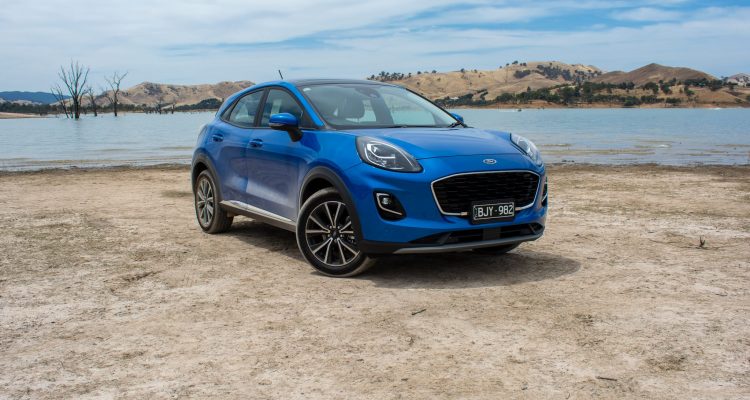
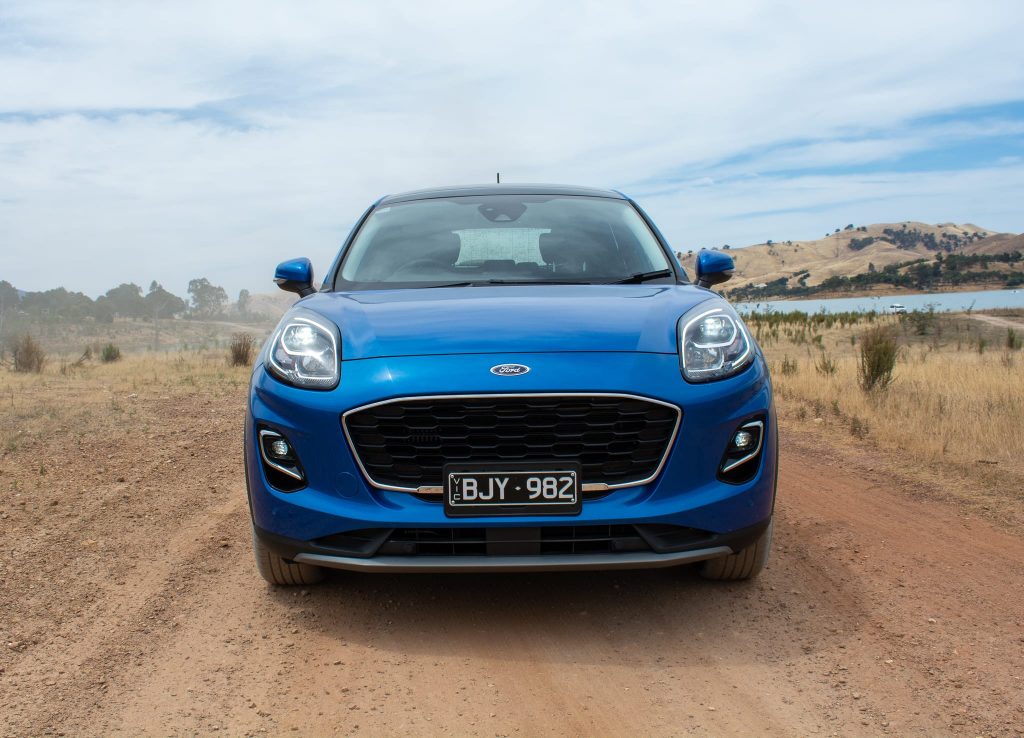
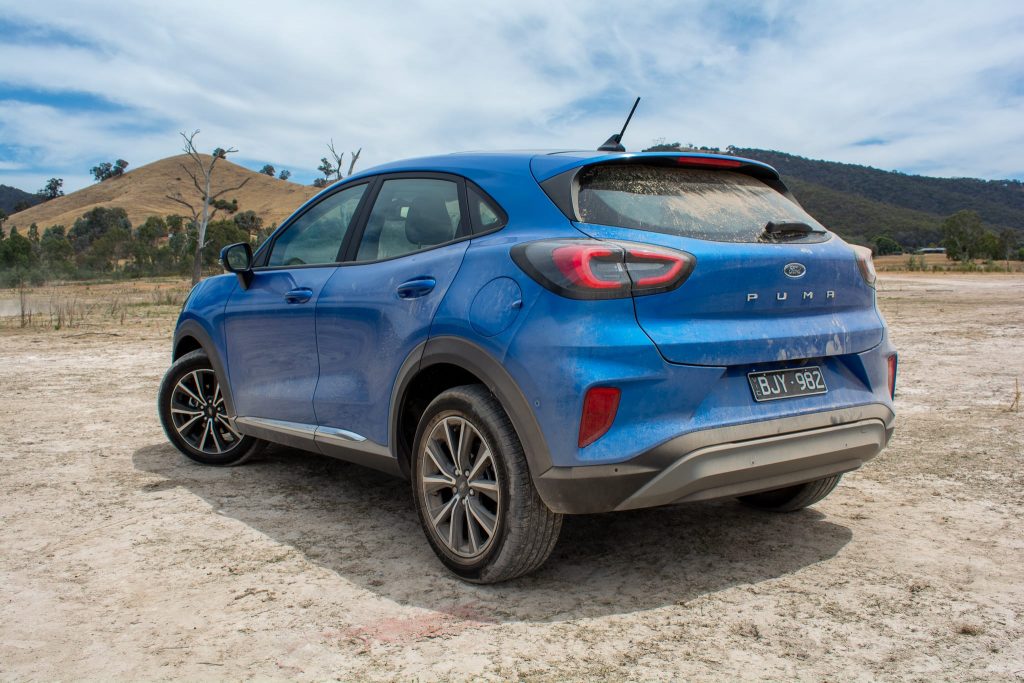
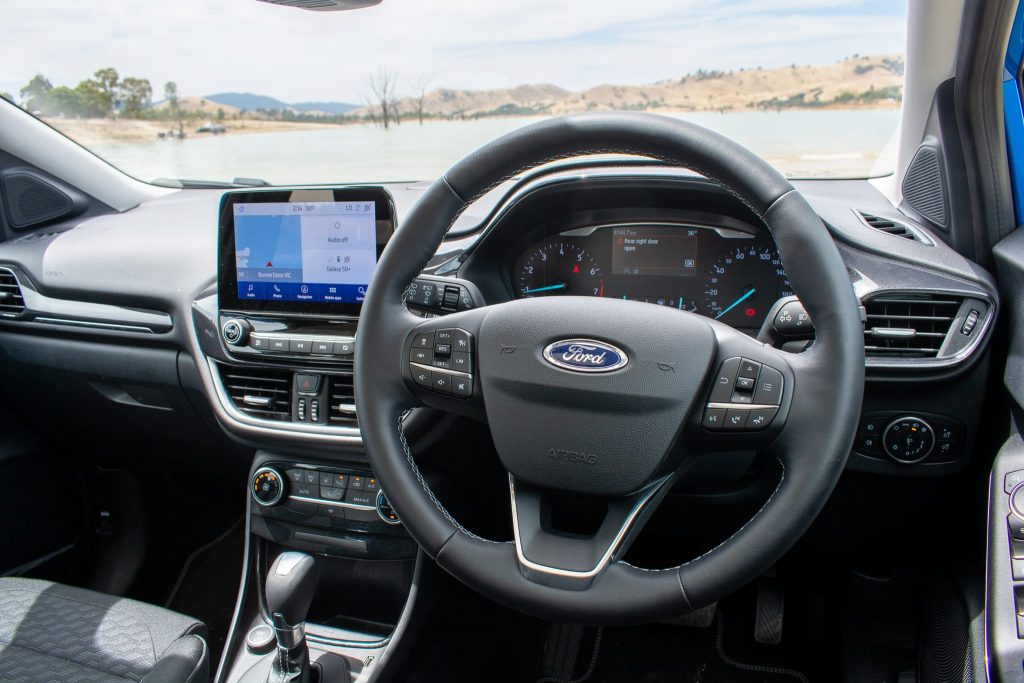
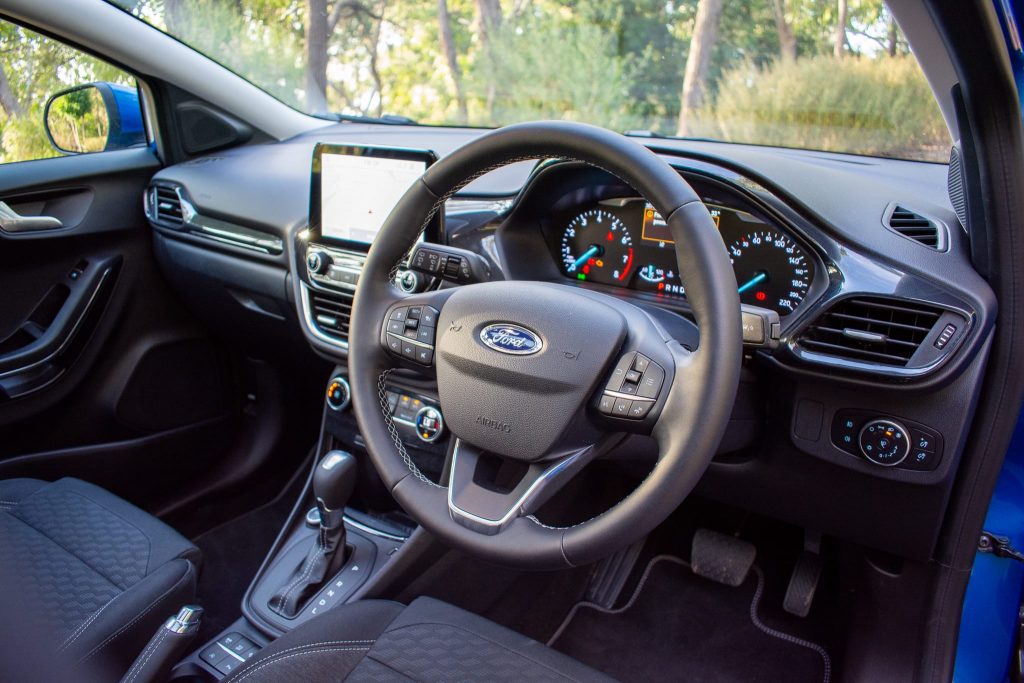
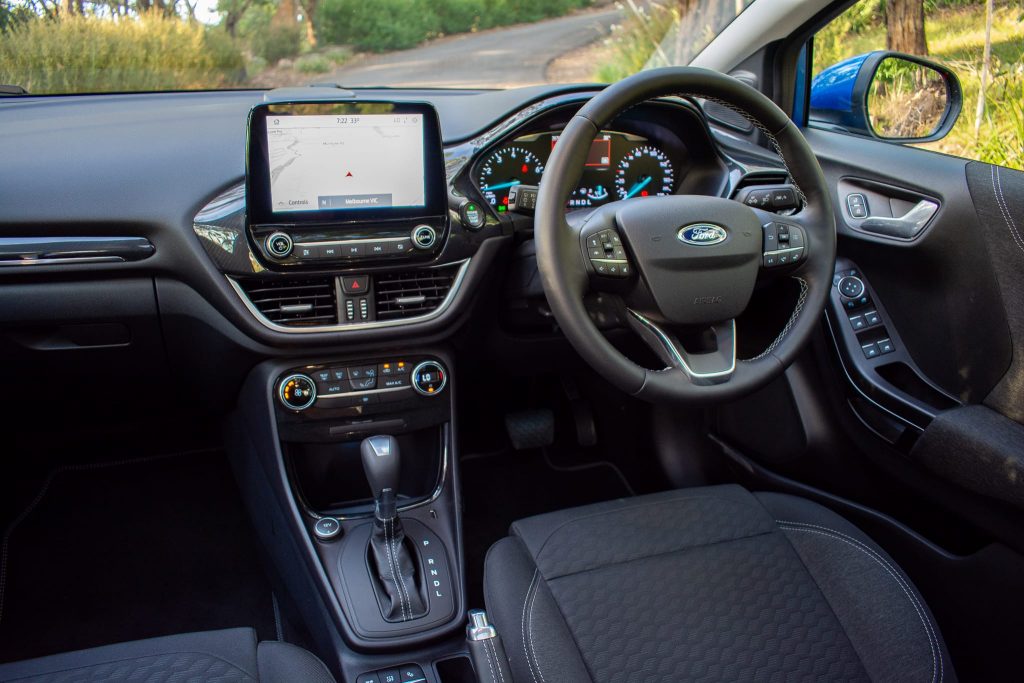
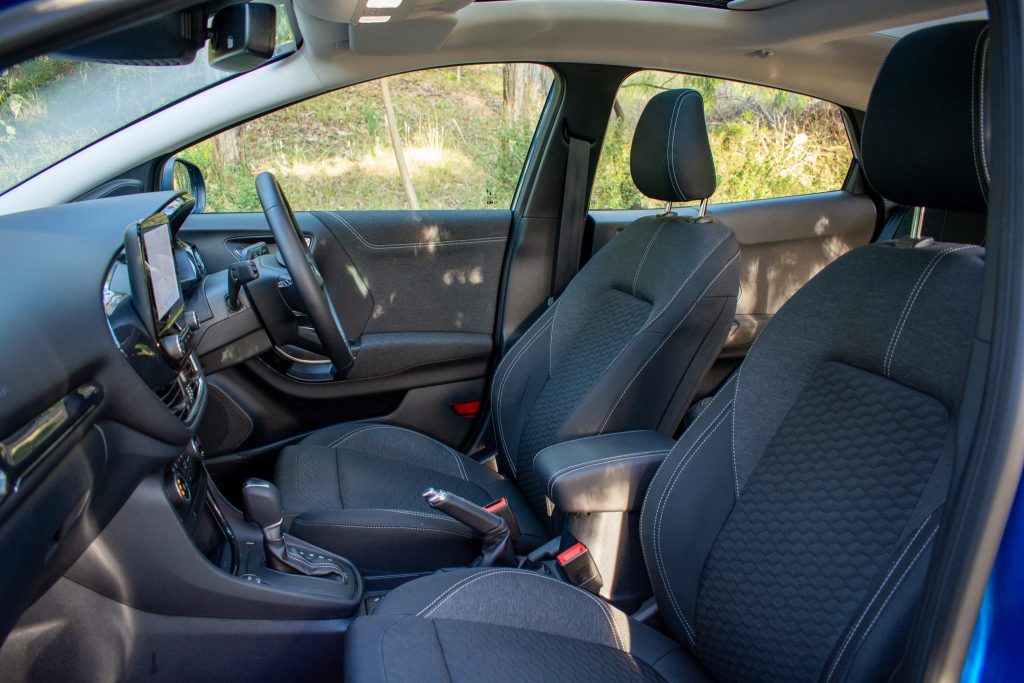
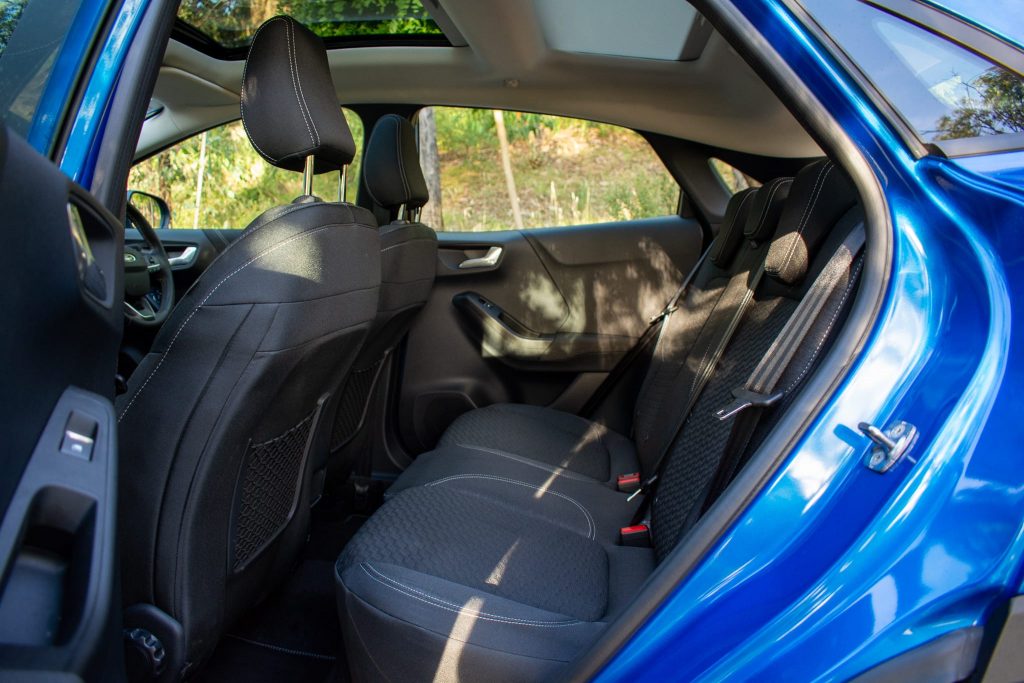
Leave a Reply